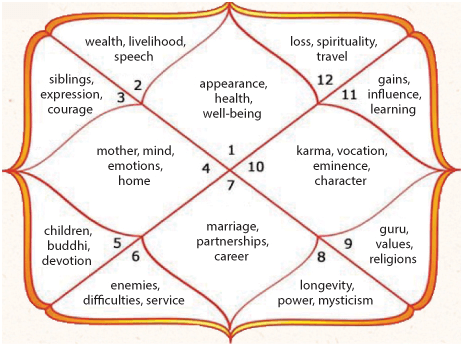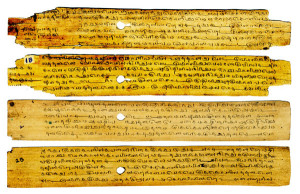XII English
Summary Notes
An Astrologer's Day
The main character (protagonist) in this story is the astrologer (fortune teller) who spent his early life in a village, but later shifted to a town. The astrologer's forefathers (ancestors) were farmers, but he could not continue the same occupation. He had to leave home and shift to a town where he married and settled permanently. Why he left his village is a suspense which gets cleared in the end. In fact, he had no knowledge of astrology but with clever guessing and some knowledge of human psychology he surprised his clients (customers). His clients were pleased and astonished with his words.
He knew no more of what was going to happen to himself next minute. He was as much a stranger to the stars as were his innocent customers. Yet he said things which pleased and astonished everyone: that was more a matter of study, practice, and shrewd guesswork.
Textbook Reference
Page 3
The astrologer did his business under a huge tamarind tree which was on a pathway running through the Town Hall Park area. It was a remarkable place in many ways with a variety of traders and vendors doing their business- medicine sellers, sellers of stolen hardware, magicians and above all the auctioneer of cheap cloth and the vendor of fried groundnut who shouted loudly (vociferous) all day to attract the customers.
The astrologer's bag
The astrologer kept his apparatus (paraphernalia): cowrie shells, mystic charts, palmyra writings, notebook etc. in his bag.

cowrie shells

horoscope/ mystic charts

palmyra writings
His personality
The Astrologer presented himself very attractively. He smeared his forehead with holy ash and applied vermillion (Kumkum). He had bright shining eyes that made his clients believe that he was really a great fortune teller. (Actually, he was totally ignorant about the science of astrology) He had dark whiskers (moustache). He wound a saffron- coloured turban around his head. Due to his appearance people were highly attracted to him just as bees are attracted to sweet smelling flowers like Cosmos and Dahlia.

an astrologer
The astrologer’s business technique
He was a good listener. He listened to his clients carefully and made them tell their story in details. That gave him clues to answer their questions and give them advices accurately!
He had a working analysis of mankind’s troubles: marriage, money, and the tangles of human ties. Long practice had sharpened his perception. Within five minutes he understood what was wrong. He charged three pies per question, never opened his mouth till the other had spoken for at least ten minutes, which provided him enough stuff for a dozen answers and advices.
Textbook Reference
Page 3
Timings and lightings
The Astrologer did his business mostly in the evening. He had no lamp of his own. He managed with the groundnut seller's flame (flare) There was no Municipal lighting too. The place was lit up by shop lights.

flare of the groundnut seller
Encounter with a client (Guru Nayak)
One evening, the astrologer was about to wind up (end) his business when a stranger approached him and challenged him. He almost forced him to answer his question and threatened to disgorge all his money, if he tells false things.
The pact (agreement)
The client gave the astrologer an anna (old currency) on the condition that the astrologer would return it to him with interest if he could not satisfy him. The astrologer demanded 5 rupees, but it was agreed that the client would pay eight annas, if satisfied by the astrologer’s answers. The astrologer was supposed to give him twice (16 annas) if he proved wrong.
Recognition
When the client lighted a Cherut (bidi), his face lit up. The Astrologer recognised him very clearly. He was Guru Nayak- his old friend- from his own village with whom he drank and gambled and quarrelled badly one day. In the fit of youthful anger, the astrologer had tried to kill him by stabbing him (hitting a knife into his stomach) and pushing him in a well. That was the reason he had left his village (mystery revealed) in order to escape imprisonment. It was assumed that the poor youth was dead, but actually, he was not dead. Someone had helped him out and he had survived. On recognising Guru Nayak, the astrologer felt uncomfortable and prepared to leave the place, but the client would not let him do so. The astrologer could not escape but showing presence of mind, he built up courage and agreed to tell about his past and answer his question-- Shall I succeed in my present search or not? It was agreed upon that the client would give him a rupee (16 annas) if convinced.
It was not a surprise that the astrologer told his past correctly - that he was stabbed with a knife, that he was pushed into a well and that he was left for dead. He even told his name- Guru Nayak! The stranger was overwhelmed with joy and enthusiasm because he was fully convinced about the astrologer's knowledge and intuition now. (The astrologer had recognized Guru Nayak, but Guru Nayak had not recognized him) But to the question - when shall I get at him? the astrologer replied that his killer was already crushed under a lorry 4 months back. Guru Nayak felt happy when he heard this, but regretted that he couldn't take revenge. He paid the astrologer a handful of coins and left. The astrologer warned him not to travel southwards (to this town) again saying, there is still danger to his life. Thus, he cleverly safeguards himself!
Confession
That evening, the astrologer returned home very late. It was nearly midnight. He confessed to his wife who was so far unaware that he had tried to kill someone but she was happy when she counted 12 and half annas. She planned to buy jaggery and coconut and prepare sweets for her child. The Astrologer felt greatly relieved from the painful persistent feeling that he had killed someone. He was happy to see Guru Nayak alive. Thus, the story ends on a happy note.